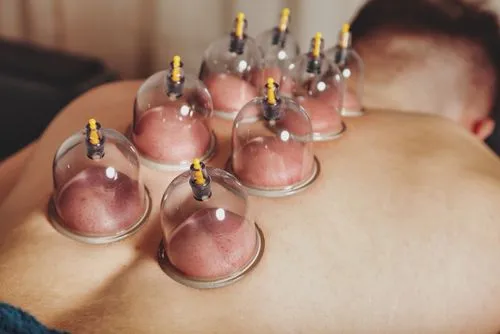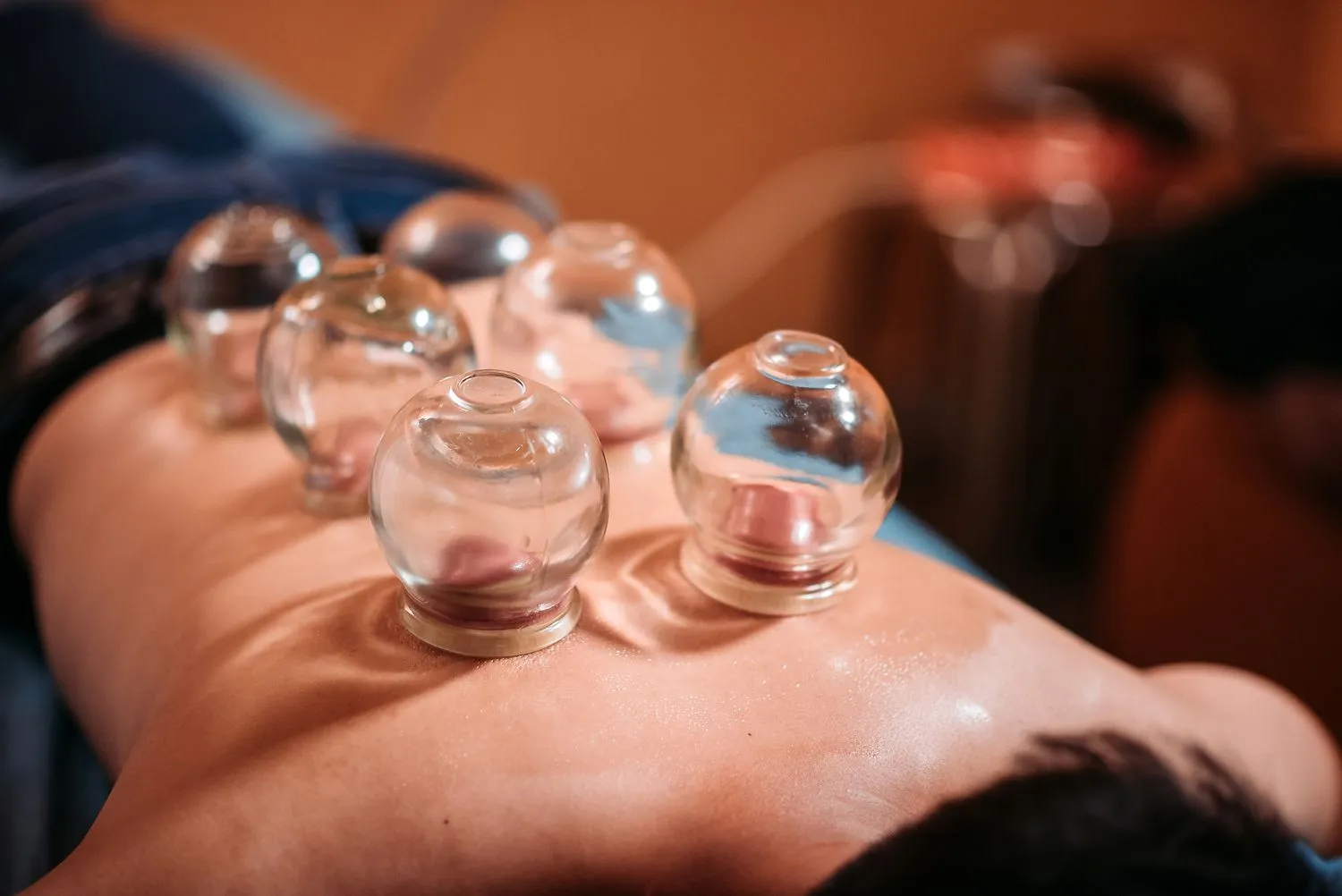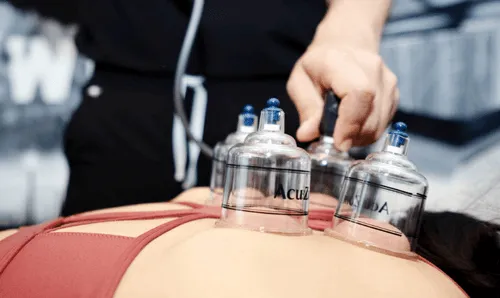
Cupping therapy, an ancient healing practice, has been experiencing a resurgence in popularity in recent years. With its roots in traditional Chinese medicine, cupping therapy has gained attention for its potential benefits in pain management, detoxification, and sports performance. Understanding the history and techniques of cupping therapy, as well as its integration into modern healthcare, is essential to grasp its growing appeal. From the mechanism of action to the various types of cupping techniques, this holistic therapy offers a unique approach to wellness. As more individuals seek natural and alternative remedies, cupping therapy has emerged as a promising option for those looking to improve their overall health and well-being. With its potential to alleviate pain, enhance athletic recovery, and support detoxification, cupping therapy is making waves in the world of holistic healing. Whether you're curious about its role in traditional Chinese medicine or its application in modern healthcare, exploring the ins and outs of cupping therapy is sure to pique your interest and leave you eager to learn more.

Cupping therapy has a long history, dating back to ancient Egyptian, Chinese, and Middle Eastern cultures. It involves placing cups on the skin to create suction, which is believed to help with pain relief, inflammation reduction, blood flow improvement, relaxation, and overall well-being. The cups can be made of glass, bamboo or silicone.
One of the key reasons why cupping therapy is gaining popularity is due to its numerous benefits. Some people find relief from muscle tension through cupping therapy while others report improved circulation and reduced stress levels. There are different types of cupping therapy including dry cupping (which uses suction alone) and wet cupping (which also involves controlled medicinal bleeding). These variations allow for customization based on individual needs and preferences.
The increasing interest in natural and alternative therapies has contributed to the rising popularity of cupping therapy. As more people seek non-invasive treatments for various health issues such as chronic pain or sports injuries, they turn to methods like cupping that have been used for centuries in traditional medicine. With endorsements from celebrities and athletes who have publicly embraced this form of treatment, there has been a surge in public curiosity about cupping therapy.
cupping therapy works by creating suction on the skin, which helps to mobilize blood flow and promote healing. The cups used in this therapy are typically made of glass, plastic, or silicone and come in various sizes. A vacuum is created inside the cup, either by heating the air inside it or using a mechanical pump. When placed on the skin, the suction pulls the skin upward into the cup, resulting in increased circulation to the area.
The process of cupping therapy involves placing cups at specific points on the body and leaving them in place for several minutes. This can create a localized pressure that feels like a deep tissue massage. As blood flow increases to the affected areas, it is believed that toxins are drawn out of the body and nutrients are brought in to promote healing. Cupping can leave temporary marks on the skin due to the rupture of tiny capillaries under the surface, but these usually fade within a few days.
Cupping therapy has been used to treat a variety of conditions such as muscle pain, inflammation, respiratory issues, and even anxiety. It is often combined with other traditional Chinese medicine techniques such as acupuncture for added benefits. While more research is needed to fully understand how cupping works from a scientific perspective, its growing popularity suggests that many people find relief from their symptoms through this ancient practice.
When it comes to cupping therapy, various techniques can be used to achieve different therapeutic effects. Dry cupping involves placing suction cups on the skin without making any incisions, while wet cupping involves creating small cuts on the skin before applying the cups to draw out a small amount of blood. Both techniques have been used for centuries in traditional medicine and are believed to promote healing and reduce pain.
Fire cupping and vacuum cupping are two common methods of creating suction within the cups. Fire cupping uses a flame to create a vacuum inside the cup before applying it to the skin, while vacuum cupping uses a mechanical pump or handheld device to create suction. Each method has its own benefits and may be preferred based on individual preferences or specific health conditions.
Moving cupping involves sliding the cups over oiled skin, which is thought to help improve circulation and relieve muscle tension. In contrast, stationary cupping involves leaving the cups in place for several minutes at specific points on the body. Both moving and stationary techniques can be effective for addressing different types of pain or discomfort.
Cupping therapy is generally considered safe when performed by a trained and experienced practitioner. However, there are some potential side effects to be aware of. These may include mild discomfort, skin irritation, bruising, and in rare cases, burns or infection. It's important to communicate openly with your therapist about any concerns or existing medical conditions before undergoing cupping therapy.
Precautions should also be taken for certain individuals who may not be suitable candidates for cupping therapy. This includes people with skin sensitivities, those taking blood-thinning medications, individuals prone to bleeding disorders, pregnant women, and individuals with certain health conditions such as heart disease or cancer. Additionally, it's essential to seek out a qualified practitioner who follows proper hygiene and safety protocols during the cupping procedure.
It's crucial for individuals considering cupping therapy to discuss their medical history and any current medications with their healthcare provider before proceeding. This can help ensure that the treatment is appropriate and safe for their specific circumstances. By being well-informed about the potential risks and taking necessary precautions, individuals can make informed decisions regarding the use of cupping therapy as part of their healthcare regimen.
In traditional Chinese medicine (TCM), cupping therapy has been used for thousands of years as a way to promote healing and improve blood circulation. The practice involves placing cups on the skin to create suction, which is believed to mobilize blood flow and help alleviate pain. Cupping therapy is based on the idea that certain meridian points on the body are connected to the internal organs, and by targeting these points with cupping, balance can be restored within the body.
Meridian points play a significant role in TCM, as they are considered pathways through which vital energy, or qi, flows. By using cupping therapy at specific meridian points, practitioners aim to clear any blockages in these pathways and restore the smooth flow of qi throughout the body. This approach aligns with TCM's holistic view of health and well-being, emphasizing the interconnectedness of mind, body, and spirit.
Furthermore, cupping therapy is often combined with acupuncture in TCM treatments. This combination is thought to enhance the overall therapeutic effect by addressing both surface-level issues through cupping and deeper imbalances through acupuncture. The synergy between these two modalities reflects TCM's comprehensive approach to healing and its focus on treating underlying root causes rather than just symptoms.
Cupping therapy has been gaining popularity as an effective method for pain management, particularly in addressing back pain. By creating suction and negative pressure, cupping helps to relieve tension in the muscles and promote blood flow to the affected areas. This can result in reduced pain and increased mobility for individuals suffering from chronic back pain.
In addition to back pain, cupping therapy has shown effectiveness in relieving muscle pain. The technique of cupping involves placing cups on the skin to create a vacuum effect, which can help loosen tight muscles and alleviate soreness. Many individuals have reported significant improvement in their muscle pain after undergoing cupping therapy sessions.
Moreover, cupping therapy has also been found to be beneficial in reducing joint pain. The suction created by the cups can help stimulate blood flow to the joints, promoting healing and reducing inflammation. As a non-invasive treatment option, cupping therapy offers potential relief for those experiencing joint discomfort.
Cupping therapy has gained popularity as a detoxification method due to its ability to remove toxins from the body. During cupping, the suction created by the cups helps to draw out impurities and metabolic waste from the tissues. This can aid in reducing overall toxin levels in the body and improving overall health.
Furthermore, cupping therapy is known to improve lymphatic drainage, which plays a crucial role in detoxifying the body. By enhancing lymphatic circulation, cupping helps to eliminate toxins and waste products more effectively. This can lead to improved immune function and reduced inflammation, contributing to an overall sense of well-being.
In addition, cleansing the body with cupping therapy can help promote better blood flow and nutrient delivery throughout the body. The combination of improved circulation and toxin removal can contribute to enhanced organ function and overall health. As a result, many individuals are turning to cupping therapy as a natural method for detoxification.
Cupping therapy has gained popularity in the realm of sports performance due to its potential to enhance athletic recovery. Athletes are turning to cupping therapy as a means to expedite the healing process post-competition or intense training sessions. By improving blood flow and reducing inflammation, cupping therapy can aid in the repair of micro-tears in muscle tissue, ultimately promoting faster recovery times for athletes.
Furthermore, cupping therapy has shown promise in alleviating muscle soreness commonly experienced by athletes. The suction created by the cups helps to release tension and tightness within muscles, providing relief from post-exercise discomfort. This can be particularly beneficial for athletes looking to maintain peak physical condition and minimize downtime due to muscle fatigue.
In addition, cupping therapy may contribute to improvements in flexibility and range of motion among athletes. By targeting specific areas of tension or restriction, cupping can help loosen soft tissue adhesions and promote better mobility. Enhanced flexibility can translate to improved athletic performance by allowing athletes to move more freely and efficiently during training or competition.

The use of cupping therapy is gaining traction in modern medicine as more healthcare professionals are recognizing its potential benefits. With an increasing number of studies highlighting the positive effects of cupping, many medical institutions are integrating this ancient practice into their treatment plans. This integration has led to a growing demand for trained and certified cupping therapists who can provide this specialized form of care.
In response to the increased interest in cupping therapy, there has been a rise in training programs and certification courses for healthcare practitioners. These programs aim to educate individuals on the proper techniques and applications of cupping, ensuring that therapists have the necessary skills to deliver safe and effective treatments. As a result, more healthcare providers are now able to offer cupping as part of their holistic approach to patient care.
Furthermore, the integration of cupping therapy into mainstream healthcare reflects a broader shift toward embracing alternative and complementary therapies. Many patients are seeking natural remedies and non-invasive treatments, leading healthcare providers to explore new ways to meet these demands. By incorporating cupping into their range of services, hospitals and clinics can offer patients a wider spectrum of options for managing their health conditions.
At Prime Chiro, we understand the importance of finding the best chiropractor near you in Lansvale NSW and nearby areas of Fairfield, Liverpool, and Cabramatta. Our team is dedicated to providing top-quality chiropractic care and consultations to help individuals in these areas achieve optimal health and wellness. Whether you are dealing with back pain, neck pain, headaches, or other musculoskeletal issues, our experienced chiropractors are here to help. Contact Prime Chiro today to schedule a consultation and take the first step towards a healthier, pain-free life.
Cupping therapy is a traditional Chinese medicine practice that involves placing cups on the skin to create suction. This suction helps to stimulate blood flow, relieve muscle tension, and promote healing.
Cupping therapy works by creating suction on the skin, which helps to increase blood circulation to the area. This increased blood flow can help to relieve pain, reduce inflammation, and promote relaxation.
Cupping therapy has been found to have several benefits, including pain relief, reduced inflammation, improved blood flow, relaxation, and improved overall well-being. It can be used to treat a variety of conditions, such as muscle tension, sports injuries, and chronic pain.
Cupping therapy is generally considered safe when performed by a trained professional. However, it may cause temporary skin discolouration, bruising, or mild discomfort. It is important to consult with a healthcare provider before trying cupping therapy, especially if you have any underlying health conditions or are taking medications.
The effects of cupping therapy can vary depending on the individual and the condition being treated. Some people may experience immediate relief, while others may require multiple sessions to achieve the desired results. The effects of cupping therapy can last for days to weeks, but regular sessions may be needed for long-term benefits.
Cupping therapy is a traditional practice gaining popularity in modern healthcare. This holistic approach uses suction to promote healing and relieve pain. It is rooted in Traditional Chinese Medicine and is known for its detoxifying and pain-relieving benefits. With various techniques and safety considerations, cupping therapy is becoming integrated into mainstream healthcare for improved athletic performance and pain management.